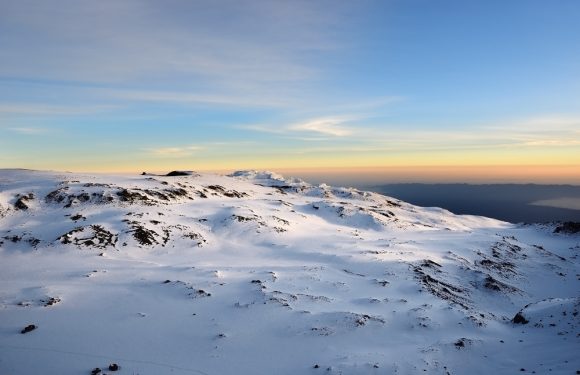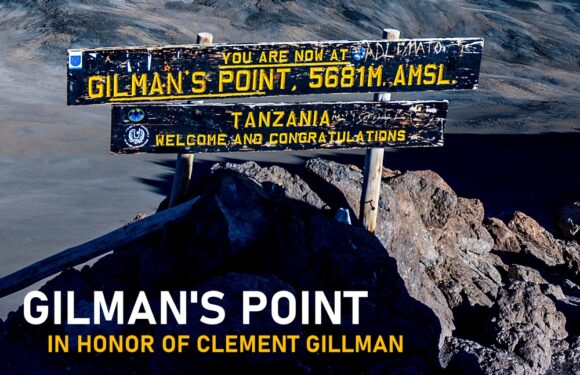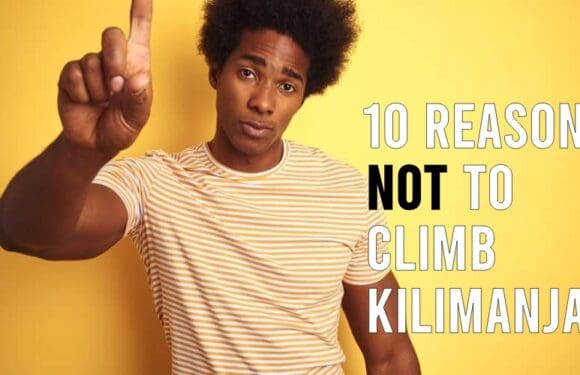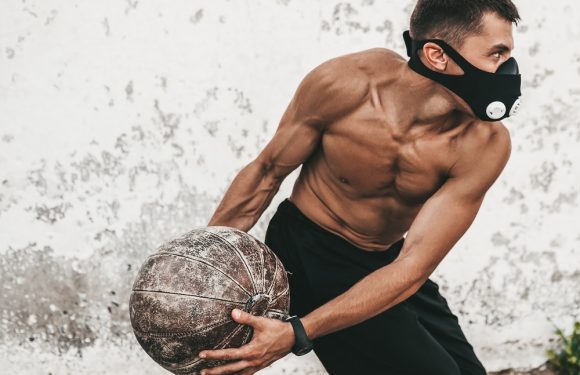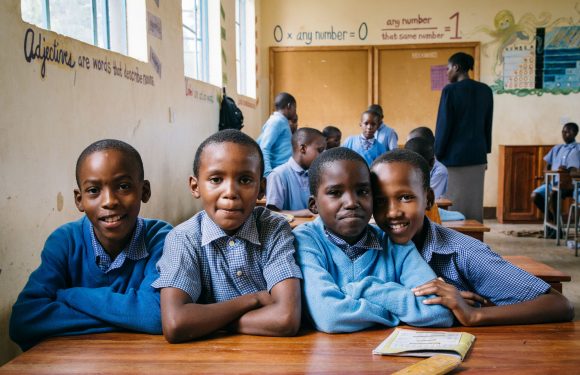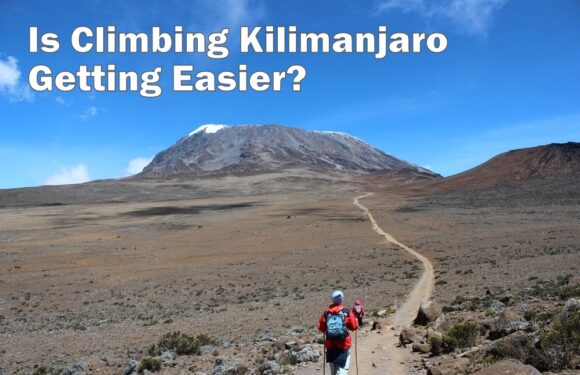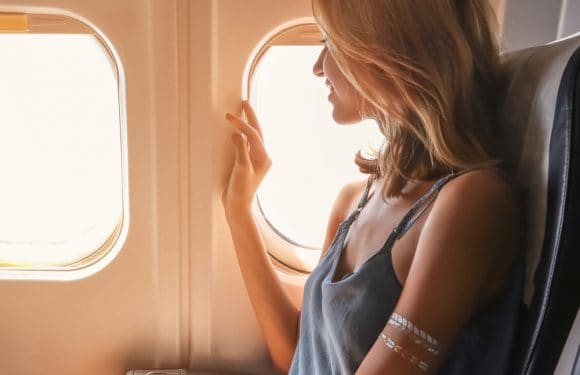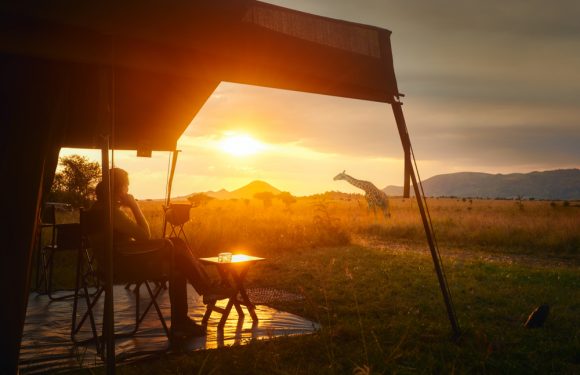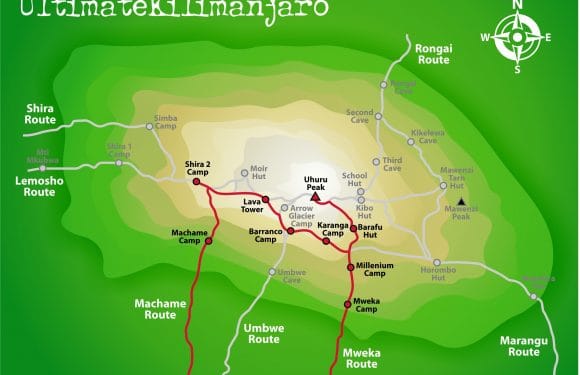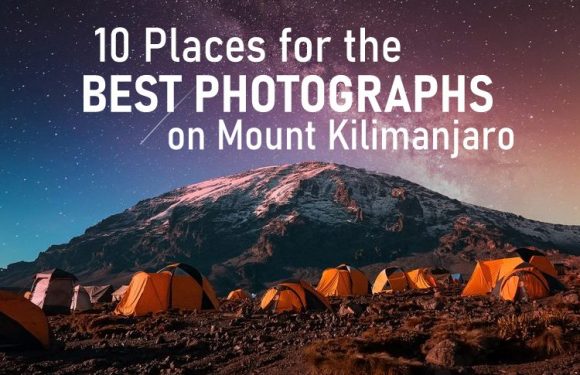You are thinking about climbing Kilimanjaro. You tell a few coworkers, family members and friends about your outdoor ambitions. When they say they are interested in joining, you are thrilled. Before you know it, you have a list of a dozen or more people who want to form a large group to climb Kilimanjaro. Woo hoo!
Then, as the planning progresses, the excitement fades. The numbers begin to dwindle. One by one people drop out, for one reason or another. When it’s time to firm up the dates and put a deposit down, the actual participants are revealed. What was once a hefty group of excited adventurers is now just a fraction of the original size.
Why is it that so many people who were initially interested ultimately don’t go through with it? Let’s talk about common objections to climbing Kilimanjaro.
“I can’t afford it.”
It’s a fact that climbing Kilimanjaro is not cheap. Park fees, government taxes and staff wages have increased the price of a climb significantly over the past decade. So it’s understandable that money could be an obstacle for someone wanting to climb Kilimanjaro.

At Ultimate Kilimanjaro® we have always provided high quality service at a reasonable price. Our company was built on this principle. We believe that doing something extraordinary shouldn’t break the bank. As a result, we do everything we can to keep our prices steady while other outfitters have continuously raised theirs.
Because we handle over 1,000 clients per year, and have been guiding since 2007, we understand how to run a smooth, efficient operation while being scrupulous in minimizing our costs. Budget operators can offer low prices but underdeliver even on the most basic of services, including food, tents and safety. Luxury operators, on the other hand, charge exorbitant fees to offer you things you don’t need.
As a midrange operator, we are confident that at our price point, no one else provides the level of excellence that we do – professional and experienced guides, high quality equipment, delicious and nutritious food, and robust safety measures. Our customers agree, which is why a big part of our business comes from friends and family referrals.
“I’ll be too cold.”
There are people who have an almost irrational fear of cold. Sure, we know that some people get cold faster than others in the same weather conditions. But that is absolutely not a reason to skip an awesome trip – especially for something that is an easy fix.
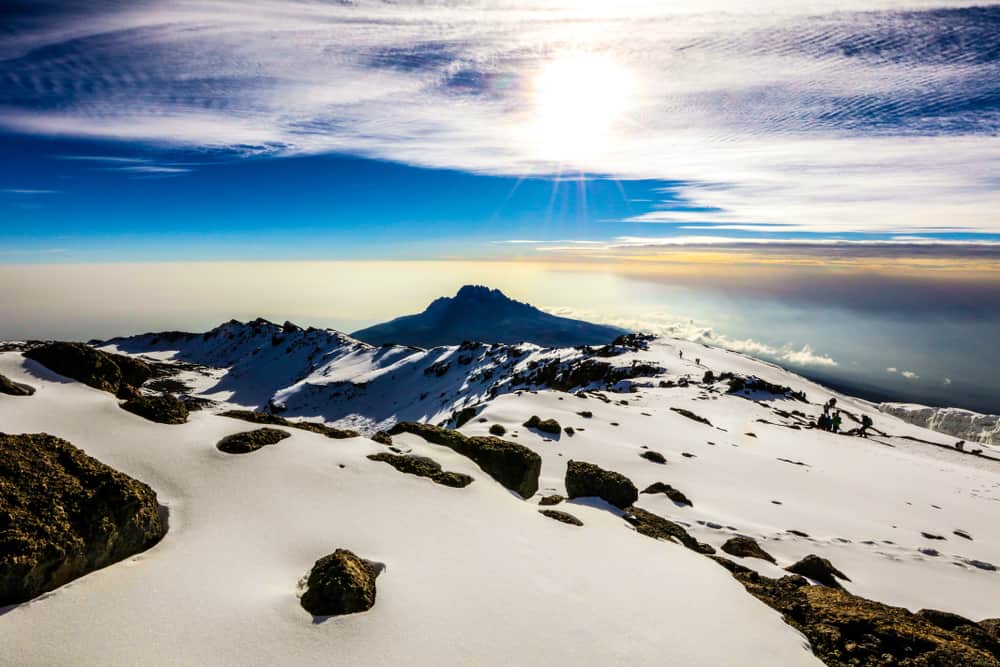
From our experience, people who are seemingly incapable of tolerating chilly weather simply don’t have the right gear. Proper gear is what allows people to work outdoors in Antarctica and survive on Mount Everest during a blizzard. So the right gear unquestionably can keep anyone warm on Kilimanjaro.
People who have not done cold weather hiking or backpacking aren’t familiar with the power of technical apparel. Fabrics have come a long way. Advancements in warmth, waterproofness, and weight have made today’s gear better than ever before. With the right gear and knowledge of layering, harsh, biting winds are easily repelled while precious body heat stays locked in.
By following our recommendations on what to wear on Kilimanjaro and what to wear on summit night, you will be well prepared for what the mountain throws at you, including how to get through Kilimanjaro’s coldest night – the summit attempt.
“I’m not fit enough.”
Kilimanjaro is a physical feat, clearly. The biggest doubt people have when it comes to climbing Africa’s highest peak is whether they have the fitness required to make it to the summit. We regularly state that Kilimanjaro can be successfully climbed by anyone with a “reasonable degree of fitness.” We stand by that.
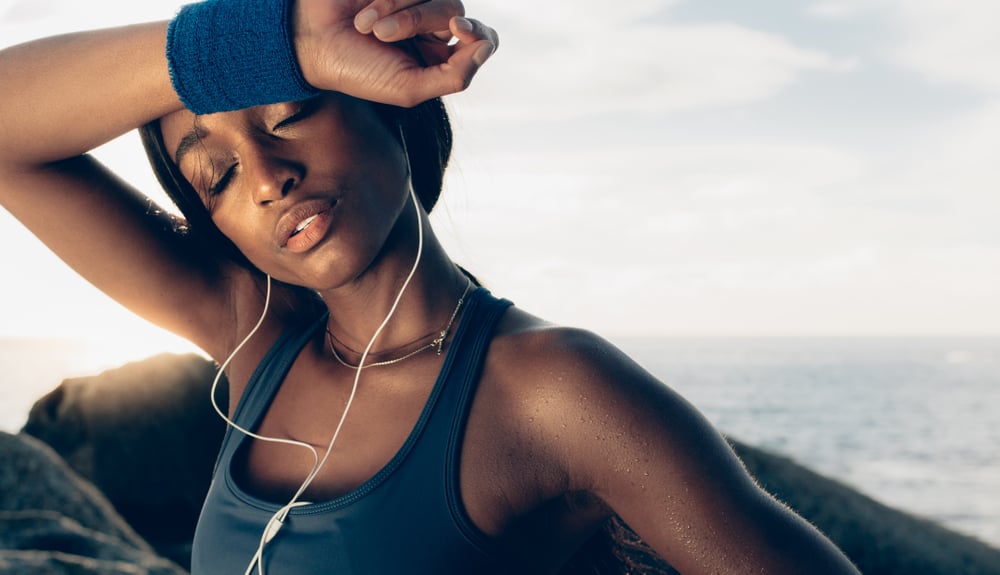
Training should be a cornerstone of your preparation. We recommend 2-3 months of training consisting of outdoor hikes and/or stair climbing. The more fit you are, the easier it will be.
For the most part, the itineraries consist of day hikes with distances of several miles requiring 4-6 hours on the trail, including hourly breaks and a lunch stop. By hiking standards, these would be categorized as light or moderate days (summit day is an obvious exception). Our guides set a slow pace to gradually expose climbers to greater elevations. This process gives your body the best chance of acclimatizing properly, overcoming the diminishing oxygen levels. Similarly, the slow pace gets the body adjusted to hiking itself so by the time you reach high camp, you will be ready for the big push to the top.
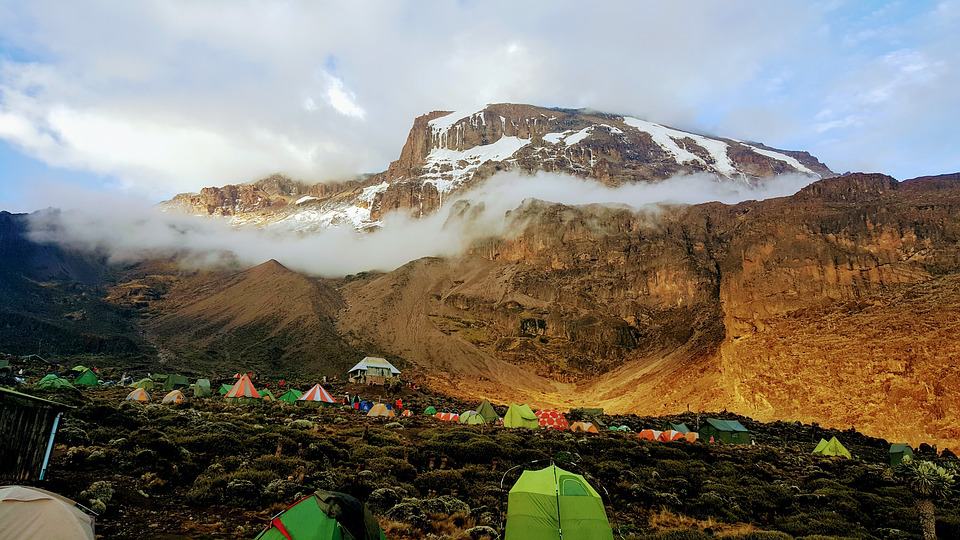
Note that our Kilimanjaro routes have been refined over thousands of climbers with the purpose of maximizing the success rate while maintaining a high standard of safety. We have guided children as young as seven and seniors as old as 80. We have guided people with physical challenges too, including a war veteran who lost both legs in combat. They all performed very well.
Come with a fit body and a positive mind and let our guides do what they do best – lead you to the summit.
“It’s too dangerous.”
Climbing Kilimanjaro has its risks. The biggest danger by far is acute mountain sickness (AMS), which can be fatal if allowed to progress. Altitude affects everyone differently. Some seemingly strong and fit people succumb to the illness while some who appear slow and fragile march along without issue. There are decisions that are well within your control to lower the incidence of altitude sickness. Things such as showing up in shape, taking a long route, bringing all the right gear, staying well fed and hydrated, and listening to your guide. However, your response to the reduced oxygen atmosphere is mostly genetic. And the only way to know for sure how you will react is to put yourself there.
Therefore, even if you do all the right things, there is still the possibility you will feel some symptoms of AMS. As long as symptoms are mild, you can continue cautiously. However, if you feel terrible and are getting worse rather than better with time, then you need to descend. Our guides will be watching closely. For nearly everyone, coming off the mountain is all it takes to make a quick, complete recovery.
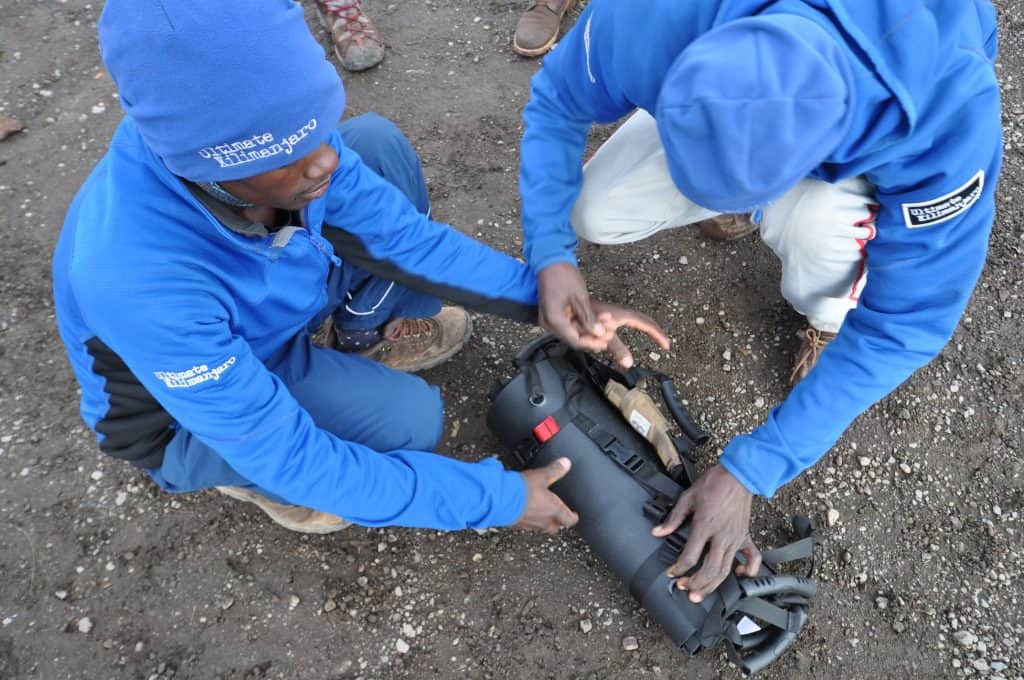
Ultimate Kilimanjaro® is well equipped to handle clients who become ill on the mountain. As one of the best guide companies on the mountain, we implement important safeguards to ensure everyone remains healthy.
We have medical checks twice daily, which includes taking oxygen saturation and pulse readings. The guides ask questions to evaluate how climbers are feeling and log the data to keep a formal record. This information allows our guides to tend to who may need assistance. In case of emergency, our guides can administer bottled oxygen, which combats AMS at its source (AMS is caused by low oxygen). They can organize a rescue using a portable stretcher, carrying a climber from top to bottom, in a matter of hours. Lastly, our guides can evacuate an injured climber using a helicopter. Together, all of these safety precautions and procedures greatly reduce the risks of climbing Kilimanjaro. In short, we have all the tools to keep you safe on the mountain.
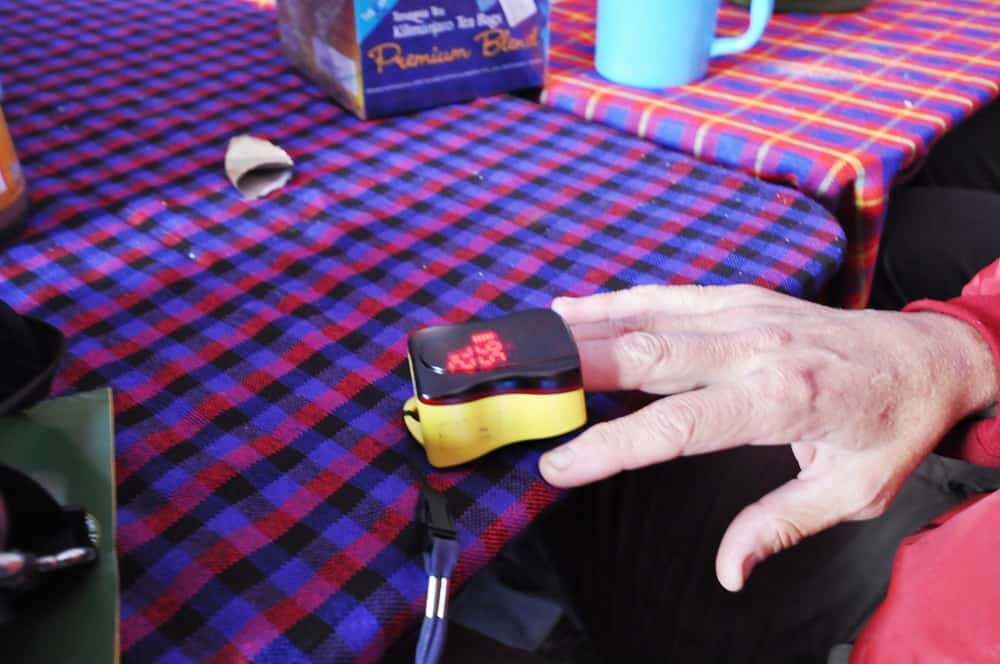
What about Africa itself? Many people have this misconception that Tanzania is very dangerous. It is not. Though it is a third world country, it is quite safe and trouble-free, significantly safer than most US cities. Like other poor places, there are the common pickpockets, thieves and scam artists running around. Just use common sense and avoid walking around alone in the city at night. The general population is extremely friendly and welcoming of tourists. Plus, our staff will be with you for almost the entire trip.
“I don’t have time.”
We understand that everybody is busy. With everyone’s hectic lives, there seems to never be a perfect time to take a couple weeks off from work, family, relationships or any other responsibilities. If you are looking for a way to refrain from going on a vacation, it’s pretty easy to find a reason why the timing is not ideal. But if Kilimanjaro holds your interest, and it probably does if you are reading this, we urge you to commit. Don’t keep pushing off the things you want to do because before you know it you may run out of chances.

Kevin, the founder of Ultimate Kilimanjaro®, was once an overworked corporate employee who felt like years simply passed by without fanfare. No cherished memories. No thrilling experiences. While he looked like the consummate professional on paper, in reality his life was empty and mundane. Until one day, he had an epiphany and made a commitment to himself that he would travel at least once a year, every year, to a faraway place – to experience what life was like outside of his bubble and to do things, adventurous things, that would test his comfort zone.
In his second year, 2006, Kevin climbed Mount Kilimanjaro on a solo trip. His life was forever changed. From that day, inspired by his accomplishment and falling in love with the country of Tanzania, he built one of the largest and most reputable climbing operations on the mountain. Since then, many thousands of people from all over the world and all walks of life have reached Kilimanjaro’s summit under the Ultimate Kilimanjaro® banner. These same thousands of people once wondered, “Should I climb Kilimanjaro?”
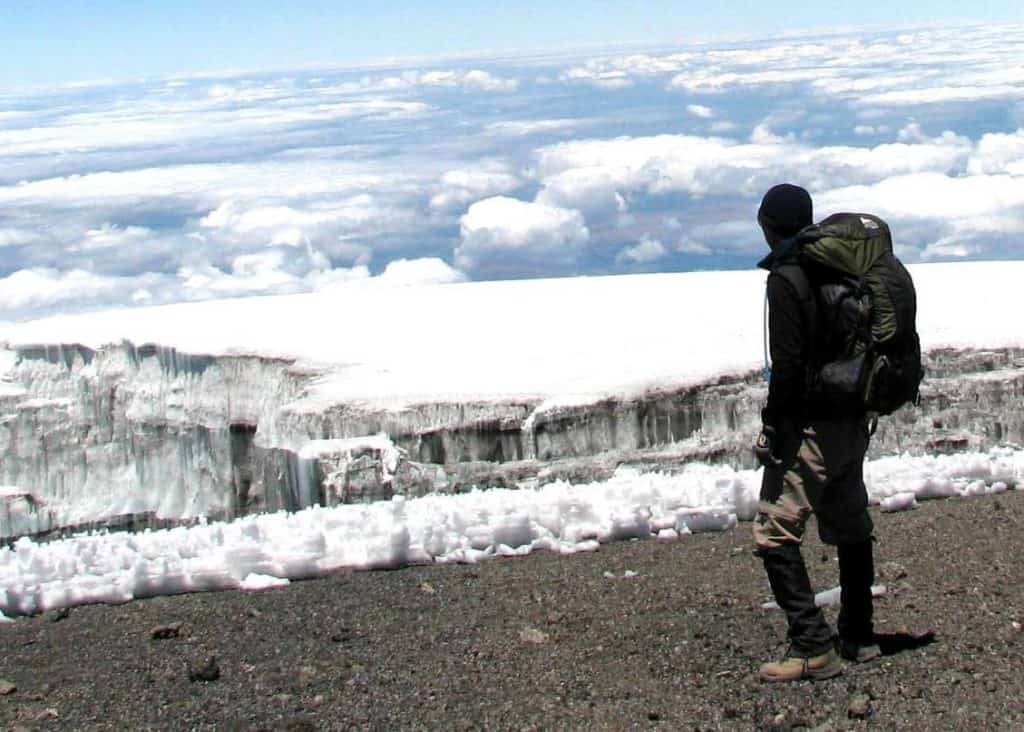
And Kevin’s corporate job? Predictably, he quit. He found that making spreadsheets and writing reports was difficult once he realized his heart was not in it. He was much more passionate about delivering a once-in-a-lifetime experience to others with the hope that it just might affect them the same way it did him -that people might be inspired by their achievement and begin the dialogue within themselves about what other possibilities may be out there. We hope that this Kilimanjaro experience will give them the confidence to pursue their own dreams and desires, whatever they may be.
“Twenty years from now you will be more disappointed by the things you didn’t do than by the ones you did. So throw off the bowlines. Sail away from the safe harbor. Catch the trade winds in your sails. Explore. Dream. Discover.” – Mark Twain












































